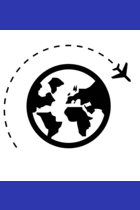10 Travel Safety Resolutions You Should Make in 2019

Crew are no strangers to stringent security protocol when it comes to ensuring smooth operations and the safety of all onboard. The health and safety of a yacht's passengers, guests and crew, are uppermost in the mind of a captain, crucial while crossing international borders and encountering volatile weather.
Meanwhile employers are responsible for the security of crew whether working or on holiday, as well as the safety of shore based staff who travel the globe to visit clients or attend international boat shows.
Increasingly technology has a role to play although it carries new risks, such as cyber threats and infringements of privacy and data protection, all of which need to be properly managed.
At the start of the New Year, Securewest International has compiled 10 resolutions to improve your company's travel risk management to keep both clients and personnel safe.
1. Keep safety at the top of your agenda
Are your policies and procedures up to date, relevant and meet the requirements of legislation and best practice? A good place to start is to review your existing documents alongside your insurance cover to identify any gaps in provision. Today, travel risk is complex and generic policies are often inadequate.

2. Get buy-in from senior management
A travel risk management program without backing from senior managers will fail because it won’t be seen as a high priority. The culture within your organisation is just as important as the processes you have in place. Consult department heads so personnel across your organisation are fully supportive and have an input from the early stages of policy development.
3. Make duty of care your priority
You are responsible for the health, safety and security of your crew from both a moral and legal perspective. Making this a priority for your organisation could avoid negligence further down the line. Recognise potential risks and put in place procedures to mitigate these. Ensure the wellbeing of your employees increases their safety on and offboard.
4. Prepare for the worst-case scenario
Ever heard of the saying… “by failing to prepare you are preparing to fail” well this is undoubtedly true for travel risk management. When things do go wrong, you need to be able to respond immediately to ensure an incident does not develop into a crisis. Make sure your strategy includes a Crisis Management Plan, which is regularly tested.

5. Do your research
Looking at trends and forecasts for the year ahead will inform your organisations approach. For example, does your policy consider “bleisure” (combining business travel with leisure time)? Booking.com found that 49% of business travellers are already extending their corporate trips to have more time to enjoy the destination. This is one of the main trends industry forecasters are predicting for 2019.
6. Be inclusive
A comprehensive program will support all individual travellers and may even go as far as having specific travel policies. Safety requirements vary according to the individual, with some groups being at greater risk than others in certain places. There are different types of risks that need to be considered including traveller profile (i.e. age, gender, sexual orientation, cultural beliefs and medical history etc.), activity-related risks (i.e. what task will they be undertaken overseas?), risk tolerance and experience (i.e. knowledge, if they’ve previously travelled to the country).
To take one example, according to new research from the Global Business Travel Association (GBTA) and AIG Travel, 83 per cent of women (more than 8 in 10) have experienced at least one safety-related incident while travelling for business over the past 12 months.
7. Communicate
Effective communication is essential to the success of your program. Ensure your staff know what to do in an emergency and how to access support and assistance wherever they are in the world.

8. Invest in the tools and resources to support your personnel
What does your program offer? Pre-travel training, advice, country assessments, risk alerts, tracking and access to a 24/7 response centre can make your personnel feel safer on their travels.
9. Embrace technology
Developments in technology are changing the way organisations are protecting their people, assets and reputation worldwide. Are you able to locate your crew quickly and effectively? Artificial Intelligence (AI) and smart systems can help to immediately establish where crew are and highlight emerging threats.
10. Raise awareness about cyber security
Cyber criminality is on the increase and fraudsters are using more sophisticated tactics. Threats include: theft or loss of equipment, identity theft, viruses and hacking, insecure wi-fi networks and payment fraud. Mitigate these risks by incorporating cyber protection into your program and raising awareness to employees on basic cyber security.
Regardless of what stage your organisation is at on their travel risk management journey these practical top tips will help you improve your traveller’s safety in the New Year!
About Securewest
Securewest provide travel risk consultancy, pre-travel training, regional threat assessments, travel alerts, check-in, monitoring, in country ground services and have a Global Response Centre operating 24/7/365. If we can be of service to your organisation please contact us for further information:
Telephone: +44 (0)1548 856001
Email: info@securewest.com
*Image credits: Thumbnail, modified, copyright Elliot Verhaeren, Wikimedia Commons, CC 4.0; clouds from plane, Pixabay, CC0 Creative Commons; airport departure board, Pixabay, CC0 Creative Commons; hacking, Pixabay, CC0 Creative Commons.


Post your comment
You cannot post comments until you have logged in.
Login to post a commentComments
No one has commented on this page yet.
RSS feed for comments on this page | RSS feed for all comments